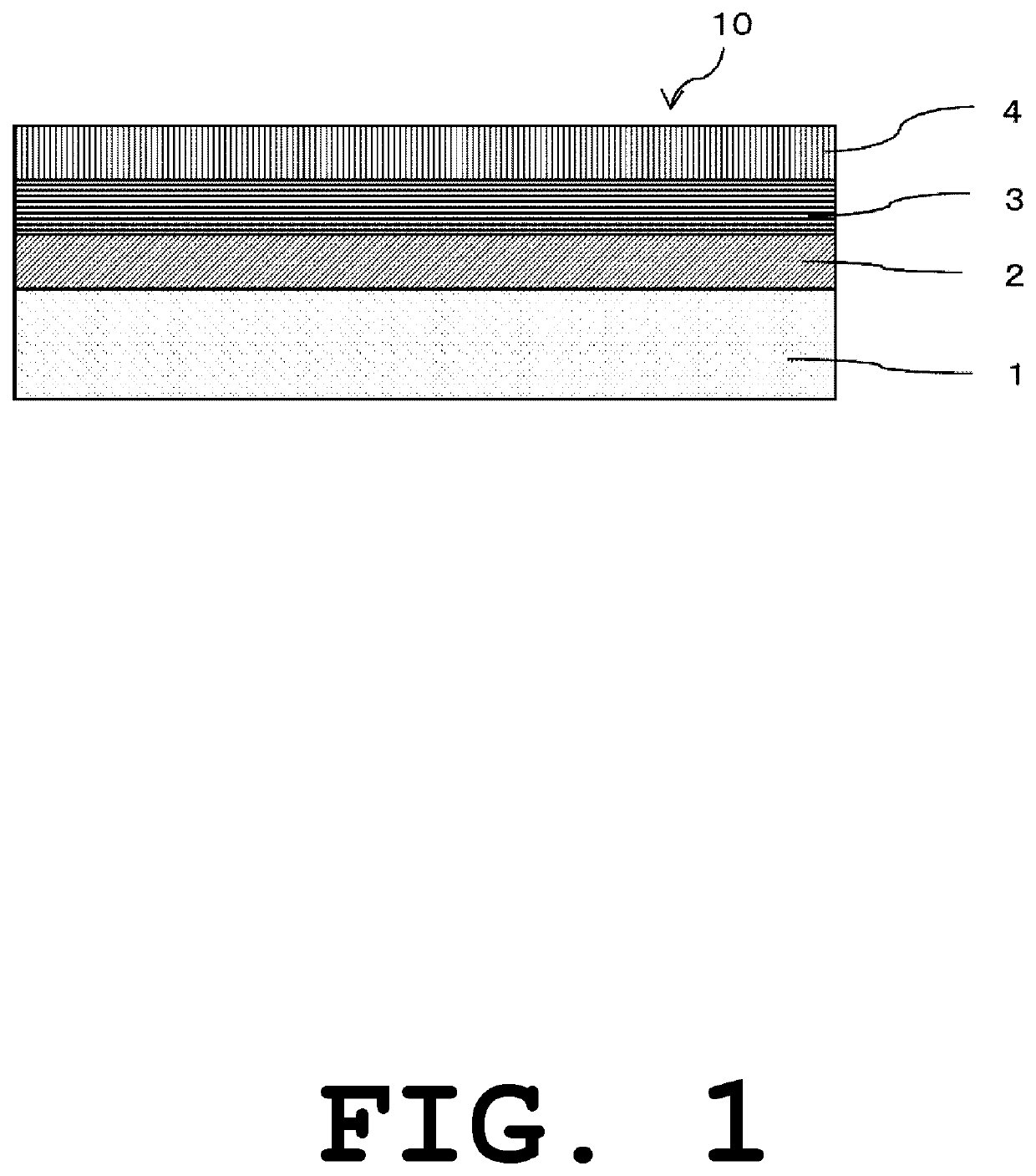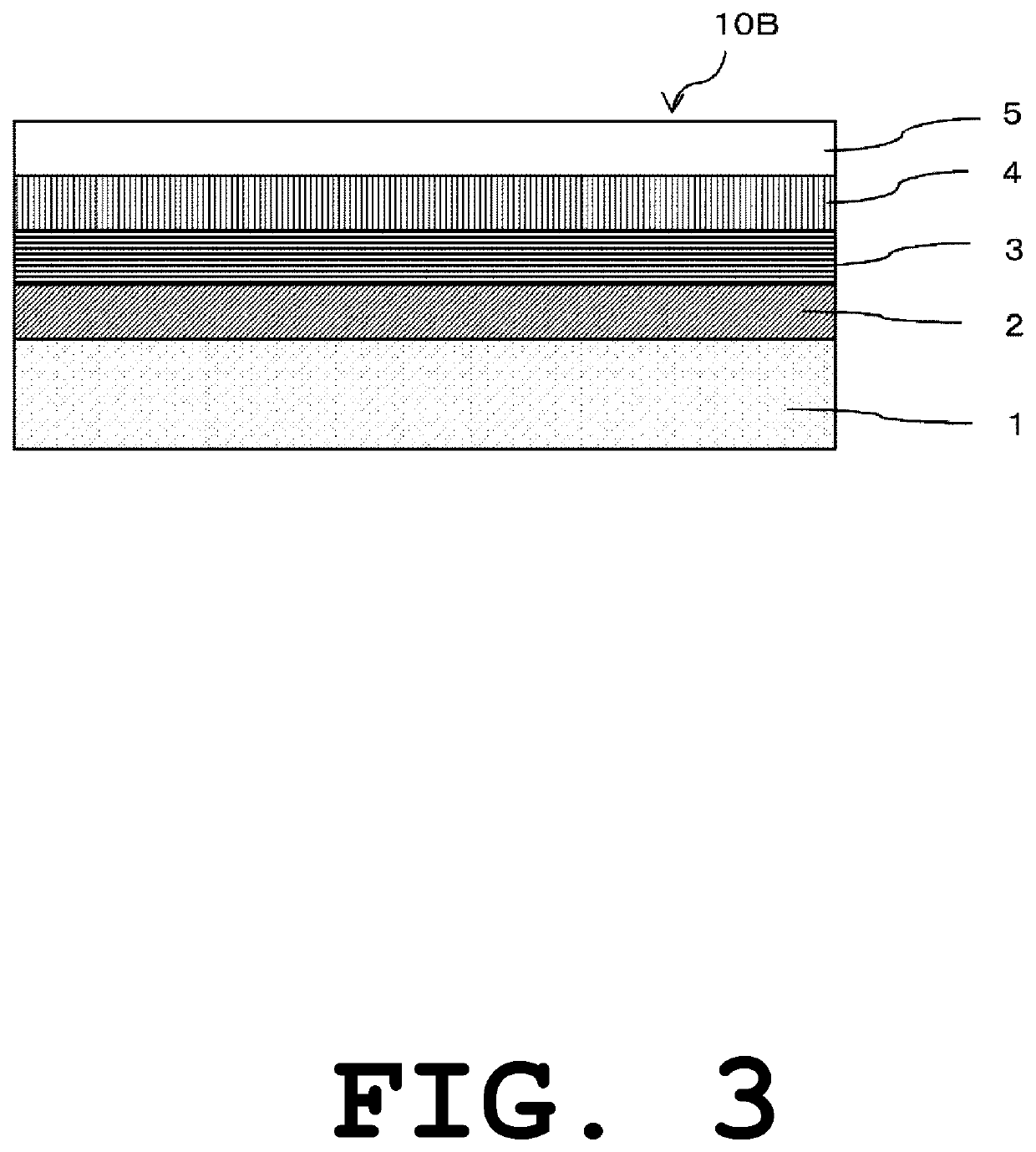Method for producing building material
a technology of building materials and manufacturing methods, applied in the direction of solid waste management, sustainable waste treatment, coatings, etc., can solve the problems of degrading the appearance of the coating surface, insufficient mirror finishing on the coating surface, and bending strength and toughness of inorganic materials, so as to achieve a better mirror-finished design surface
- Summary
- Abstract
- Description
- Claims
- Application Information
AI Technical Summary
Benefits of technology
Problems solved by technology
Method used
Image
Examples
first embodiment
of the Present Invention
[0053]FIG. 1 is an enlarged sectional view illustrating a part of a building material produced in a first embodiment of the present invention.
[0054]A building material 10 in FIG. 1 includes an inorganic material 1, a first ultraviolet-cured coating 2 formed on the surface of the inorganic material 1, a second ultraviolet-cured coating 3 formed on the surface of the first ultraviolet-cured coating 2, and an enamel (mirror-finishing) coating 4 formed on the surface of the second ultraviolet-cured coating 3.
[0055]In the method for producing the building material 10, the inorganic material 1 is polished to obtain a smooth surface. The polishing is performed by any typical method such as polishing with sandpaper, buffing, or belt polishing.
[0056]For example, polishing is performed using a belt sander with a plurality of heads.
[0057]Examples of the inorganic material 1 include wood cement board, wood wool cement board, pulp fiber reinforced cement board, wood flake...
second embodiment
of the Present Invention
[0090]FIG. 2 is an enlarged sectional view illustrating a part of a building material produced in a second embodiment of the present invention.
[0091]A building material 10A in FIG. 2 includes an inorganic material 1A, a first ultraviolet-cured coating 2A formed on the surface of the inorganic material 1A, a second ultraviolet-cured coating 3 formed on the surface of the first ultraviolet-cured coating 2A, and an enamel coating 4 formed on the surface of the second ultraviolet-cured coating 3.
[0092]Herein, the inorganic material 1A is obtained by coating the surface of the inorganic material 1 with a sealer. Any sealer may be used, such as a sealer formed of epoxy resin, acrylic resin, urethane resin, or the like.
[0093]The sealer can be applied by a typical method that uses, for example, a spray, a flow coater, a natural coater, or a roll coater. The sealer is also applied in any amount such as 3 g / square shaku (1 shaku=about 30.3 cm).
[0094]The first ultraviol...
third embodiment
of the Present Invention
[0099]FIG. 3 is an enlarged sectional view illustrating a part of a building material produced in a third embodiment of the present invention.
[0100]A building material 10B in FIG. 3 includes an inorganic material 1, a first ultraviolet-cured coating 2 formed on the surface of the inorganic material 1, a second ultraviolet-cured coating 3 formed on the surface of the first ultraviolet-cured coating 2, an enamel coating 4 formed on the surface of the second ultraviolet-cured coating 3, and a protective coating 5 formed on the surface of the enamel coating 4.
[0101]The protective coating 5 is formed of a protective resin. Examples of the protective resin include fluororesin, acrylic resin, urethane resin, and acrylic silicone resin.
[0102]The building material 10B including the protective coating 5 at its outermost surface is a building material having excellent weather resistance.
[0103]A method for producing the building material 10B will be roughly described. Th...
PUM
| Property | Measurement | Unit |
|---|---|---|
| thickness | aaaaa | aaaaa |
| thickness | aaaaa | aaaaa |
| thickness | aaaaa | aaaaa |
Abstract
Description
Claims
Application Information
 Login to View More
Login to View More - Generate Ideas
- Intellectual Property
- Life Sciences
- Materials
- Tech Scout
- Unparalleled Data Quality
- Higher Quality Content
- 60% Fewer Hallucinations
Browse by: Latest US Patents, China's latest patents, Technical Efficacy Thesaurus, Application Domain, Technology Topic, Popular Technical Reports.
© 2025 PatSnap. All rights reserved.Legal|Privacy policy|Modern Slavery Act Transparency Statement|Sitemap|About US| Contact US: help@patsnap.com



